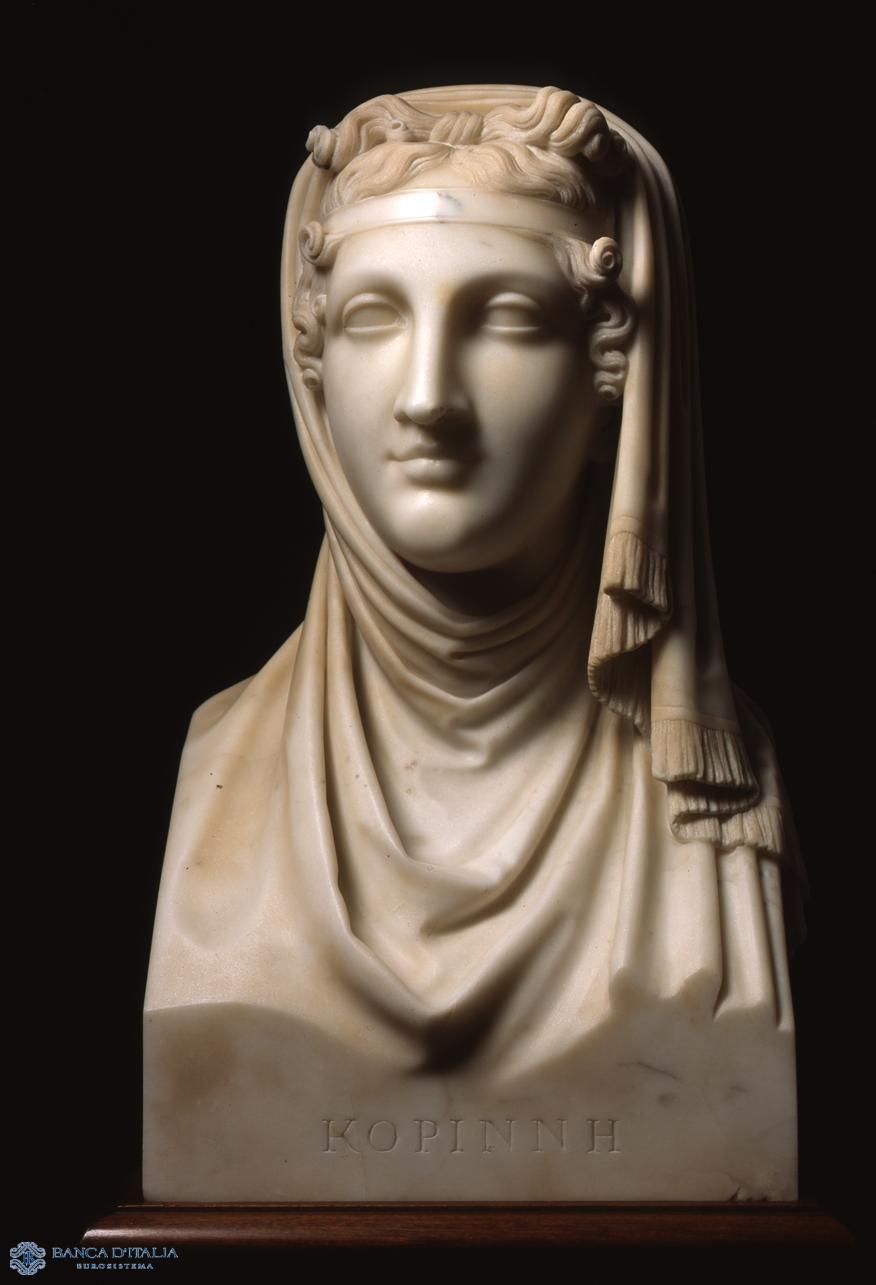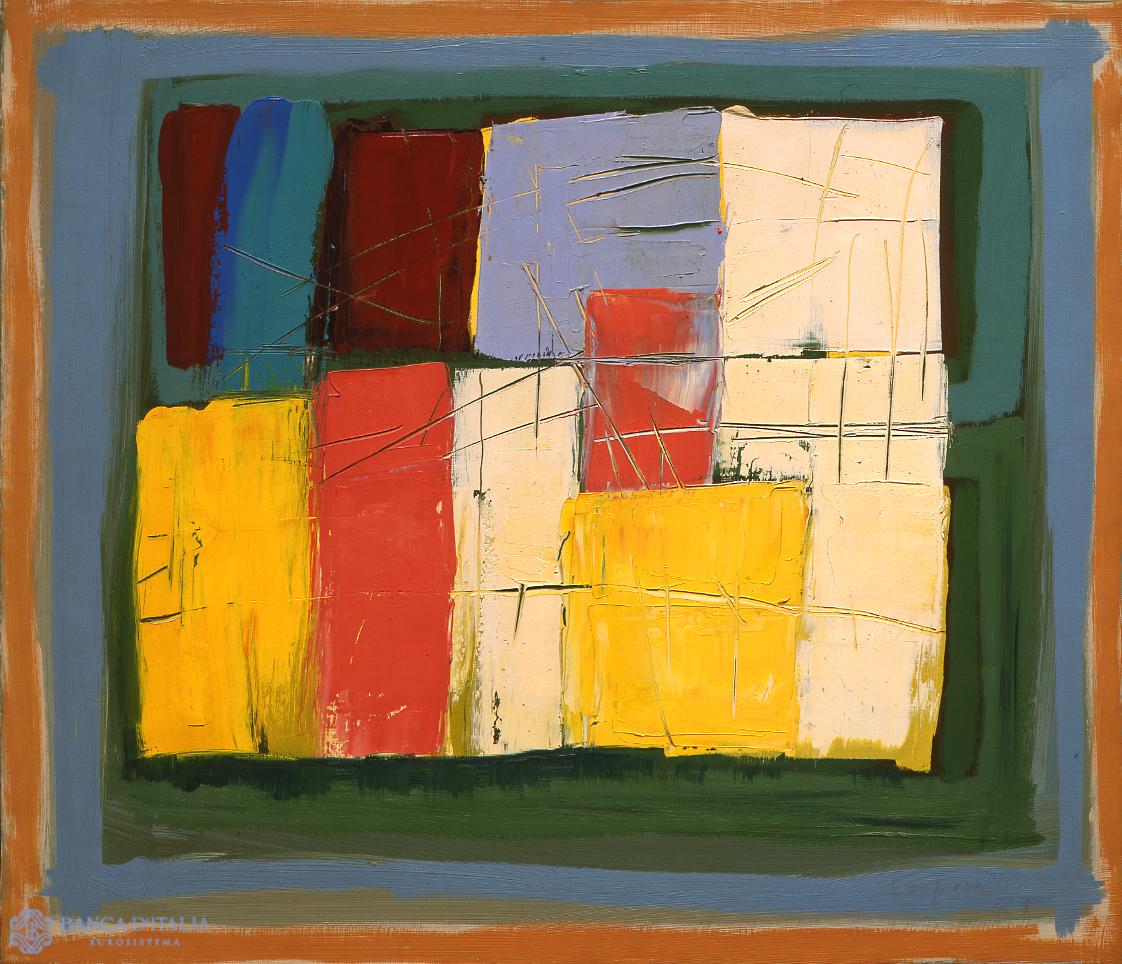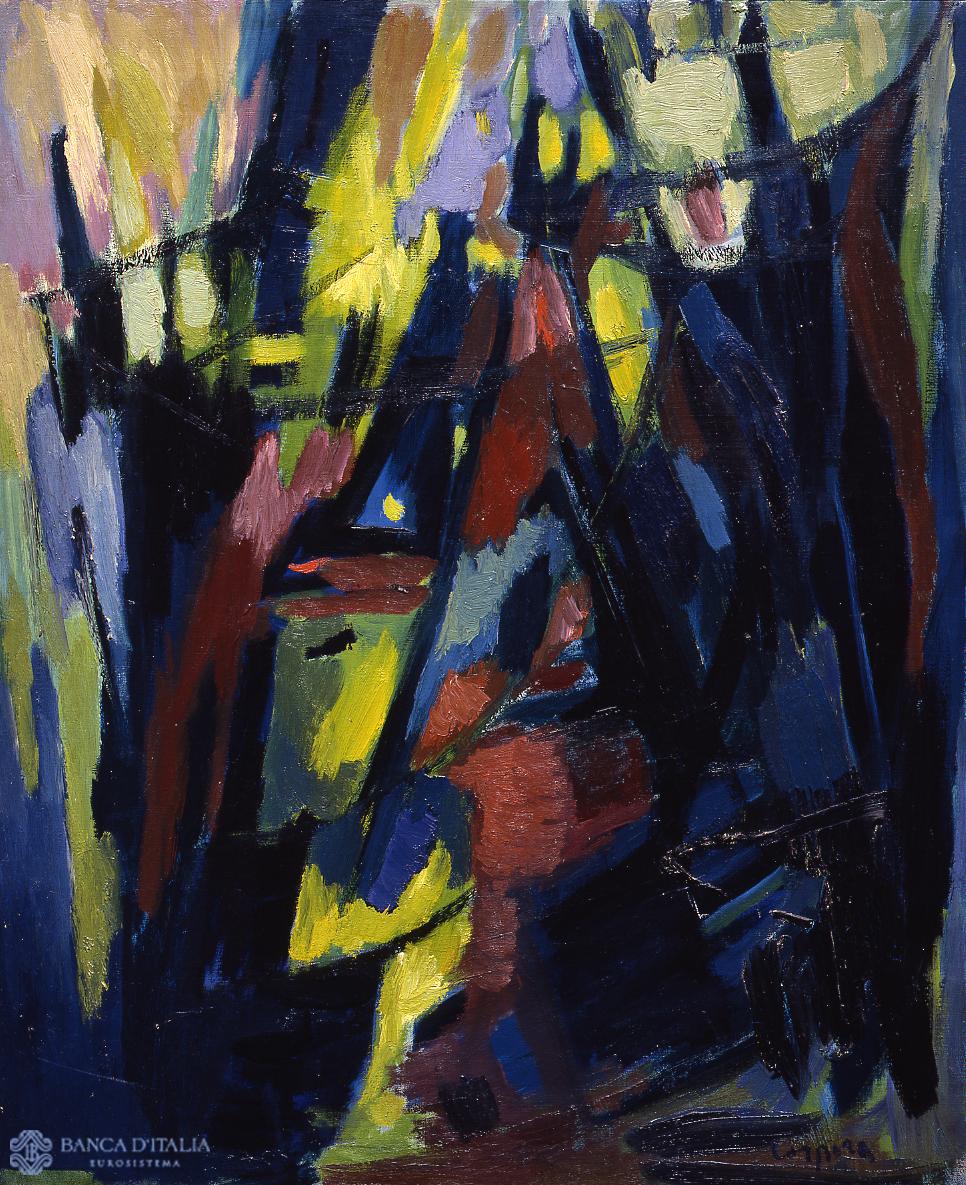Works of art
Works of art
Number of results: 283

Corinne
Antonio Canova
Antonio Canova modelled the herm Corinne in 1819. At the time, having won international renown as the great Venetian exponent of the Neoclassical school, he was working on the preparatory drawings for the Temple at his birthplace of Possagno, a building in which the artist gave full expression to his original conception of the Neoclassical ideal.
19th century AD
Portrait
Sculpture

Il paese della nostra infanzia
Antonio Corpora
The image, enclosed by monochrome bands of browns, blues and greens that besiege it and progressively confine it to the centre, is composed of a jumble of imperfectly geometrical tesserae, which are intensely, almost joyously coloured and which, right in the middle of the work, comprise a kind of architecture of surface, vibrating with emotion, yet fixed and haughty.
20th century AD
Abstract
Painting

Paesaggio
Antonio Corpora
One sees no mimetic forms of the natural world in these vivid colours, alternating between bursts of light and darkening ravines in shadow, between sombre blacks and fiery reds, rendered freely and with gestural immediacy. Beginning in 1950-51, Corpora’s Neo-Cubism exploded into shards and fragments, which blunted and almost concealed the sliver of reality from which the image derives.
20th century AD
Abstract
Painting

Pietra miliare
Antonio Corpora
A white fire occupies the centre of the image, a ghostlike apparition in the pall of greys and ochres. But everything has become a blur by now: the forms, no longer confined by the drawing, have been reduced to ”pulsating bodies woven from light and graphic rhythms,” as Nello Ponente wrote when presenting the 21 works from these years that hung in the vast room dedicated to the artist in the Venice Biennale of 1960.
20th century AD
Abstract
Painting

Veduta di città
Antonio Corpora
The lower section of the canvas, which is divided horizontally into two nearly equal halves, contains a dense weave of virtually monochrome signs. The upper section contains a brightly coloured and chaotic view of a city, which grazes the extremely high, almost obscured skyline, flooding the space with countless chromatic notes.
20th century AD
Landscape
Painting

Fabrica di Roma
Antonio Donghi
In this depiction of a town in Lazio Donghi ignores the settlement itself in favour of a purely natural space, with no human presence: a sort of gap between two trees, two hulking masses at each side of the canvas, opening in the centre to a horizon formed by the silhouette of a mountain.
20th century AD
Landscape
Painting

Paesaggio con elci
Antonio Donghi
This “Landscape with Holm-oaks” (1928) was painted during a phase when Donghi had basically fully developed his figurative programme. Stasis, the feeling of fatal stillness of trees which, with their dense foliage, occupy the entire field of vision, springs from the avid gaze of the view in search of the tiniest detail.
20th century AD
Landscape
Painting

Felicità
Antonio Mancini
The figure, illuminated by the touches of light of her blouse, stands out in black against a lighter background with vivid immediacy. The woman’s beautiful unruly locks are shaded towards chestnut brown; the artist succeeds in rendering the softness and movement that animates her hair with a shiver of vitality that is communicated to her smiling face.
20th century AD
Figurative
Painting

I fiori bianchi
Antonio Mancini
The lad’s immature but attentive face emerges from the dark, the effect stemming from the contrast between the light and the dark tones. The branch of white flowers rings out on the jet-black jacket. Beneath a soft mass of curls enlivened by highlights, the lad’s head is bent slightly and turned towards something or someone.
19th century AD
Figurative
Painting

Pepiniello
Antonio Mancini
In this fine painting Mancini offers us proof of his wonderful ability to weave a canvas of light and shadows in which the figure pulsates, conveying a perception so lively and immediate that it almost appears indefinable at first sight.
20th century AD
Painting
Portrait
